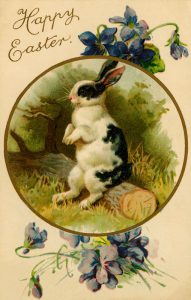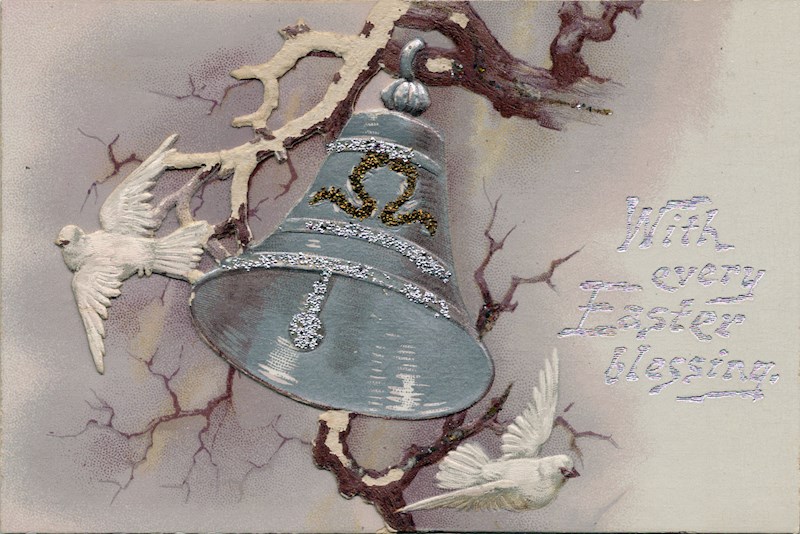In celebration of the much-loved Easter tradition, Britain’s Royal Mail has highlighted the history of card giving during the springtime holiday.
According to the U.K.-based Greeting Card Association (CGA), each person “across the pond” buys about 30 cards a year—that’s more than £1.7 billion annually, more than any other nation in the world. The GCA’s latest research shows about 11 million Easter cards, totalling about £15 million, were sent in 2019—an increase of nearly 10 million from 2016.
The practice of sending Easter cards began in the late 19th century. The first card was created when an unknown stationer in Victorian England decided to add a greeting to a drawing of a rabbit. This marked the beginning of a tradition that continues through the present day.

Design in 1905, an Edwardian greeting card depicts a bunny seated on a log. Bunnies were a popular design for Easter cards in the early 20th century. Photo by Mary Evans Picture Library.
THE CARD TAKES SHAPE
Early Easter greetings took the form of a postcard because the early postal service only allowed the address and the stamp on the back of a card.
This limited designs to Easter symbols, scenery or well-known buildings.
In 1905, the postal service in Austria and Germany made the decision to separate the back of the cards into two halves, creating the “divided back” shape we know today. The right half was for the address and stamp while the other side was left blank for a message.
One year later, the new layout was officially sanctioned at the Universal Postal Union Convention in Rome.
ANIMAL MAGIC
By 1910, lambs, poultry, and eggs featured heavily on cards as a symbol of rebirth.
The Easter bunny also appeared frequently with eggs to indicate fruitfulness. Young girls were also popular as a representation of luck and hope.
WWI BROUGHT CHANGES
The First World War saw images of children replaced with those of soldiers with flowers for the first time.
The Easter bunny was also given a military makeover in an effort to rally support at home for the troops fighting abroad.
According to the GCA, Easter is the fifth-most popular greeting card holiday behind Christmas, Valentine’s Day, Mother’s Day and Father’s Day.

